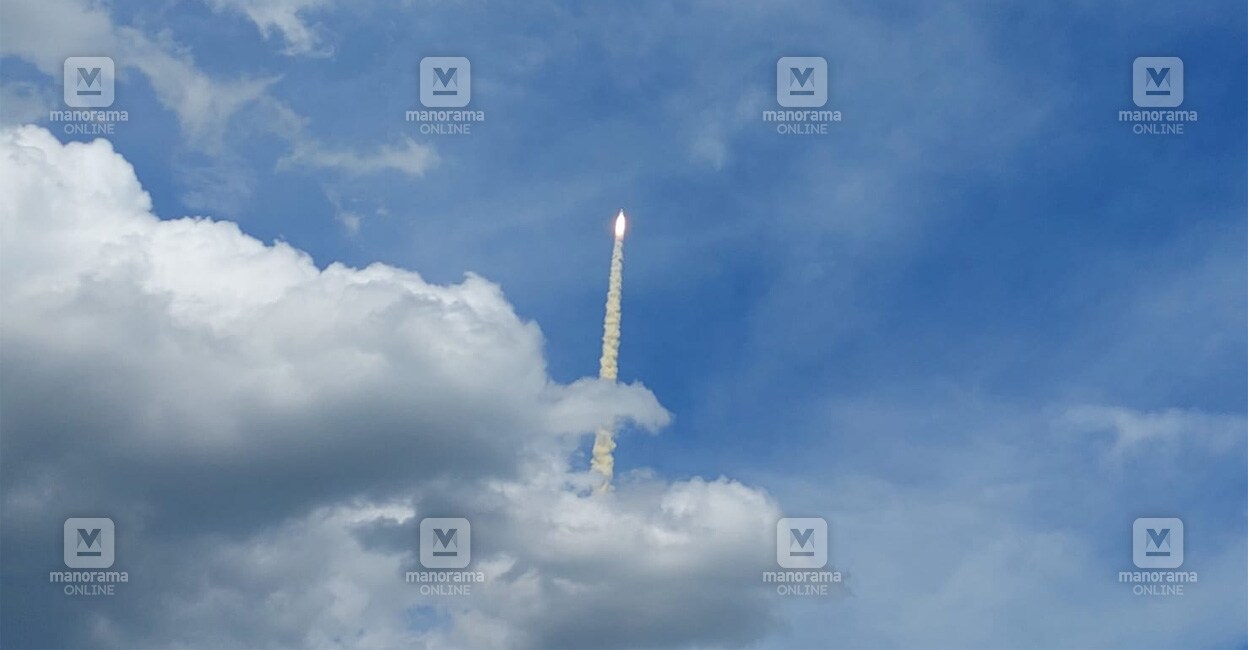India's third moonshot Chandrayaan-3 begins journey 'in desired orbit'

Mail This Article
India's space agency Indian Space Research Organisation (ISRO) launched its ambitious moon mission Chandrayaan-3 on-board LVM3-M4 rocket from Sriharikota at 2.35pm on Friday.
Chandrayaan 3 has successfully separated from LVM3-M4 rocket, the ISRO said shortly after the launch.

At the end of the 25.30 hour countdown, the LVM3-M4 rocket, the largest and heaviest in its class and dubbed as 'Fat Boy' lifted off majestically from the second launch pad, discharging thick plumes of smoke.
The soft landing on moon's surface is expected to take place after 40 days on August 23 or 24.
Thousands of people gathered at the Satish Dhawan Space Centre to witness India's attempt at creating history with the launch of Chandrayaan-3.
Despite scorching heat and a forecast of dry weather, passenger vehicles carrying ardent space enthusiasts were making a beeline to the spaceport.
Over 10,000 persons from Tamil Nadu, Andhra Pradesh and Karnataka arrived since early morning and they would be allowed to witness the launch from the dedicated space gallery set up by ISRO adjacent to the main entrance of the Satish Dhawan Space Centre (SDSC).
If successful, India would become the fourth country to achieve a controlled lunar landing, after the United States, the former Soviet Union, and China.
Chandrayaan-3 spacecraft will be the first to land at the lunar south pole, a region of particular interest due to the presence of water ice.

The mission comes after the Chandrayaan-2 mission in 2020, which successfully deployed an orbiter but saw its lander and rover crash near the planned touchdown site.
The ISRO said it had completed a review of the mission readiness ahead of Friday's scheduled launch.
Chandrayaan, which means "moon vehicle" in Sanskrit, includes a 2 metres (6.6 feet) tall lander designed to deploy a rover near the lunar south pole, where it is expected to remain functional for two weeks running a series of experiments.
This launch marks a significant step for India and its growing space industry, following the government's push to stimulate investment in space exploration and satellite-based businesses. The number of space startups in India has more than doubled since private launches were introduced in 2020.The launch is India's first major mission since Prime Minister Narendra Modi's government announced policies to spur investment in space launches and related satellite-based businesses.

